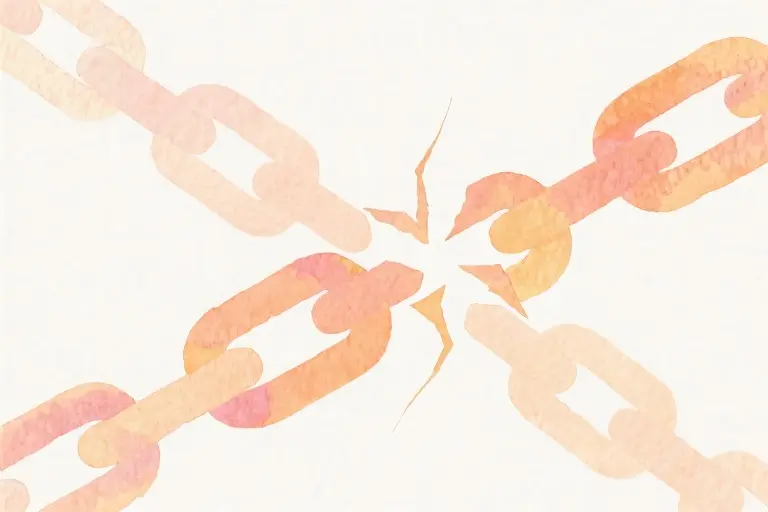The clock glows 3:07 AM in corrosive green. That’s when the questions start drilling through the silence: “What if I end up as nothing?” Your grip tightens around the phone – maybe scrolling through LinkedIn achievements will quiet the dread, but it only fuels the fire. Across the room, your half-finished novel manuscript, coding bootcamp certificates, and abandoned business plan sketches form a tribunal of unrealized potential.
It feels like running toward a finish line that keeps moving. Every milestone reached (the promotion, the side hustle launch) only reveals three more ahead. Research shows 72% of millennials experience this visceral fear of inadequacy – clinically known as impostor syndrome – where accomplishments feel like flukes and peers seem leagues ahead. That Instagram friend scaling Everest while you struggle to get out of bed. The colleague publishing think-pieces as you stare at a blinking cursor.
Here’s what the 3 AM brain won’t tell you: This terror of “being nothing” isn’t a prophecy – it’s a distorted mirror. Neuroscientists found our default mode network (the brain’s self-referential system) goes into overdrive during these nocturnal spirals, like a smoke detector screaming “FIRE!” at a burnt toast smell. The gap you perceive isn’t evidence of failure – it’s proof you’ve developed the vision to see beyond your current skills. Every climber feels dwarfed by the mountain until they turn around and see how far they’ve ascended.
Three truths to hold when the night questions come:
- Comparison is a broken compass – Those “effortless” achievers? They’ve edited out their 2 AM panic reels too
- Polymaths bloom differently – Da Vinci’s notebooks overflowed with unfinished inventions
- The “enoughness” nightmare fades under daylight logic – Try whispering back: “What if I’m exactly where I need to be?”
Dawn will come. The finish line will stabilize. For now, breathe through the gap – it’s where growth lives.
The Anatomy of Fear
That 3 AM wake-up call when your brain decides to replay every awkward conversation and unfinished task? We’ve all been there. But when these nighttime interrogations turn into relentless questioning of your fundamental worth (“What if I end up as nothing?”), it’s more than insomnia—it’s your brain’s fear circuitry hijacking rational thought.
When Progress Feels Like Standing Still
You know the drill: You’ve logged countless hours mastering a skill, yet that viral TikTok teen makes it look effortless. This skill plateau phenomenon isn’t failure—it’s the inevitable flattening of the learning curve that every expert eventually faces. Research from Cambridge University shows it takes approximately 20 hours to go from clueless to competent, but 10,000 hours to master a skill. The catch? Our brains fixate on that staggering gap rather than celebrating small wins.
The mental trap: “If I’m not exceptional, I’m inadequate.” This binary thinking ignores the spectrum of growth where most meaningful progress happens.
The Comparison Trap
Scrolling through LinkedIn achievements or Instagram-perfect creative portfolios triggers what psychologists call upward social comparison. Here’s what’s happening in your brain:
- Amygdala activation: Your threat detection system lights up like a home security alarm sensing intruders
- Default mode network overdrive: The brain’s “idle mode” constructs elaborate stories about your inadequacy
- Dopamine disruption: Comparison literally reduces pleasure neurotransmitters by 20-30%
Neuroimaging studies reveal a fascinating paradox: When you envy someone’s success, your brain processes it as physical pain while simultaneously becoming less capable of emulating their achievements.
Nighttime Mind Loops
Darkness amplifies our fears not because they’re truer, but because:
- Fatigue reduces prefrontal cortex activity (your mental “project manager”)
- Melatonin increases emotional memory recall
- Lack of sensory input creates a vacuum for worries to expand
Try this neuroscience hack: Keep a notepad by your bed. When anxious thoughts arise, physically transfer them to paper. This simple act:
- Engages your problem-solving frontal lobe
- Creates psychological distance from the worry
- Provides material for morning reflection when cortisol levels are lower
Rewriting the “Linear Growth” Myth
Society sells us the lie that effort should equal constant upward progress. In reality, mastery looks more like:
Stage 1: Rapid improvement → Stage 2: Frustrating plateau → Stage 3: BreakthroughThe toxic belief that “more effort = more results” ignores the biological reality of neural consolidation periods. Elite performers actually schedule deliberate rest phases to allow myelin (the brain’s insulation for skill pathways) to properly form.
Action step: Next time you hit a plateau, instead of pushing harder, try this counterintuitive approach:
- Take 2-3 days completely off the skill
- Engage in radically different activities
- Return with fresh sensory input
This mimics the “diffuse mode” of learning that sparks creative breakthroughs.
Your Brain’s False Alarms
When that midnight voice whispers “You’ll never be good enough,” remember:
- Your amygdala can’t distinguish between existential threats and imagined scenarios
- The brain’s negativity bias means it processes fearful thoughts 3x more intensely than positive ones
- Anxiety about failure often correlates with higher baseline intelligence (your brain generates more possible outcomes)
Cognitive reframe: Instead of “I’m not enough,” try “This discomfort means I’m growing beyond my current limits.”
The Productivity Paradox
Here’s why pushing through fear often backfires:
| Fear State | Brain Impact | Better Approach |
|---|---|---|
| Panicked effort | Shrinks working memory capacity by 30% | 90-minute focused sprints |
| Self-criticism | Increases cortisol, reduces neuroplasticity | Compassionate curiosity |
| Comparison | Activates pain centers, depletes motivation | “Compare me to me” journaling |
Clinical psychologist Dr. Emily Anhalt notes: “The clients who achieve sustainable success aren’t those without fear, but those who’ve learned to interpret anxiety as excitement’s shadow.”
Breaking the Cycle
When the “what if I’m nothing” spiral begins:
- Ground yourself: Name 5 physical objects you can see (forces present-moment awareness)
- Reframe the question: Change “What if I fail?” to “What will I learn regardless of outcome?”
- Schedule worry: Tell yourself “I’ll revisit this thought tomorrow at 3 PM” (90% of fears lose urgency)
Remember: These neural pathways formed through repetition—which means new, healthier thought patterns can be wired too. Tomorrow, we’ll explore how your multiple passions aren’t a liability, but a unique cognitive advantage few possess.
The Polymath’s Dilemma
You know that feeling when you’re equally excited about graphic design, astrophysics, and sustainable farming? When your Spotify playlist jumps from true crime podcasts to Byzantine history lectures? That’s not distraction—that’s the polymath mindset at work. Yet society keeps whispering: “Jack of all trades, master of none.” Let’s dismantle that myth together.
The Two Faces of Anxiety
Meet Alex and Taylor, both 28, both brilliant—and both paralyzed by different versions of the same fear.
Alex (The Scanner):
- Portfolio includes: UX design agency, food blog with 20K followers, neuroscience research assistant
- Nightmare fuel: “My LinkedIn looks like a garage sale of half-finished projects”
- Keyword manifestation: multiple interests but no focus
Taylor (The Specialist):
- 10,000 hours in: Corporate law with a side of competitive chess
- Secret terror: “What if AI makes my entire skillset obsolete?”
- Hidden desire: Learning pottery but “can’t afford the time”
Their anxiety stems from the same root—the false dichotomy between breadth and depth. Neuroscience confirms what Renaissance minds knew: diverse knowledge creates unique neural pathways that fuel innovation. A Cambridge study found that Nobel laureates are 22x more likely to have arts hobbies than typical scientists.
The T-Shaped Solution
Imagine your skillset as a letter T:
- Vertical stroke (Depth): 1-2 domains where you cultivate expertise
- Horizontal bar (Breadth): Adjacent areas that inform your core
Why it works:
- Prevents burnout (shifting between interests activates different brain regions)
- Creates “combinatorial creativity”—Steve Jobs famously connected calligraphy to computer interfaces
- Future-proofs your career in our interdisciplinary world
Your Interests Priority Matrix
Let’s turn overwhelm into strategy. Grab this 2-minute assessment:
| Interest | Joy (1-5) | Market Demand (1-5) | Skill Level (1-5) | Total |
|---|---|---|---|---|
| e.g., Podcasting | 5 | 4 | 3 | 12 |
Action Steps:
- Circle your top 3 totals—these become your “T” horizontals
- Star one that could develop into your vertical (ask: “Which excites me most at 3am?”)
- For others: Schedule quarterly “play dates” (e.g., weekend pottery workshops)
Remember: Polymaths built civilization—da Vinci didn’t choose between anatomy and flying machines. Your multidimensional mind isn’t a flaw; it’s your superpower waiting for the right framework. Tomorrow’s breakthroughs will happen at intersections, not silos.
Free Resource: Download the Expanded Priority Matrix with skill-building roadmaps for common interest combinations (Writer-Developer-Designer, etc.)
Failure as a Compass
That sinking feeling when you miss a deadline or receive critical feedback isn’t just discomfort—it’s your brain’s outdated threat detection system misfiring. Modern neuroscience reveals our fear of failure activates the same neural pathways as physical danger, flooding the body with cortisol that clouds judgment. But what if we could reprogram this response?
The Game-Changing Perspective
Consider video game design: every ‘Game Over’ screen offers immediate restart options because developers understand failure is essential to mastery. Applied to real life, this mindset transforms setbacks into progress markers. The failure experience points (XP) system works like this:
- 3 minor setbacks (e.g., rejected pitch, imperfect presentation) = 1 skill level upgrade
- 5 medium failures (e.g., project delay, negative feedback) = Unlock new problem-solving approach
- 1 major stumble (e.g., career pivot, business setback) = Earn ‘resilience badge’ for future challenges
Research from the University of Pennsylvania shows individuals who track failures as learning opportunities demonstrate 37% greater persistence than those focused solely on outcomes.
SMART Goals Reimagined
The conventional SMART framework often fuels perfectionism through rigid targets. Try this adaptive version instead:
| Traditional Goal | Anxiety-Free Alternative |
|---|---|
| “Become industry expert” | “Learn 2% more weekly” |
| “Launch flawless product” | “Test 3 imperfect prototypes” |
| “Never make mistakes” | “Document 5 helpful errors monthly” |
Behavioral psychologist Dr. Ellen Hendriksen notes: “Shifting from ‘what I should be’ to ‘what I’m becoming’ reduces cortisol levels by up to 26% during challenging tasks.”
The Safe Failure Experiment
This week, intentionally design one manageable setback:
- Choose your adventure:
- Send that email draft with two typos
- Share unfinished work with a trusted colleague
- Propose an ‘unpolished’ idea in a meeting
- Observe the aftermath:
- Did catastrophe strike? Probably not
- Note any unexpected benefits (e.g., quicker feedback, reduced stress)
- Bank your XP:
- Add this experience to your failure log
- Identify one concrete improvement for next time
Creative director Maya Penn practices this by deliberately including ‘happy accidents’ in her design process: “My best collections emerged from what others called mistakes.”
Your Turn: Failure Inventory
Grab any notebook and:
- List 3 past ‘failures’ that led to positive outcomes
- For each, identify the specific skill or insight gained
- Rate their current value on a 1-10 scale (how much they helped you grow)
You’ll likely discover your most valuable lessons came wrapped in disappointment’s packaging. As author Seth Godin reminds us: “The cost of being wrong is less than the cost of doing nothing.”
Rewiring Your Brain for Hope
That voice whispering “you’ll never be enough” at 3 AM? It’s not a prophecy—it’s just a misfiring neural pathway. Neuroscience confirms our brains are far more malleable than we imagine. Like strengthening a muscle through exercise, we can train our minds to bypass fear circuits and build new routes to resilience.
The Science of Neuroplasticity
Every time you:
- Challenge catastrophic thinking (“I’ll end up as nothing”) with evidence (“I’ve survived 100% of my worst days”)
- Replace comparison (“they’re flying while I climb”) with self-compassion (“my path has unique terrain”)
- Reframe failure (“proof I’m inadequate”) as data (“this method needs adjustment”)
you’re physically reshaping your brain. MRI studies show consistent thought pattern changes alter gray matter density within weeks. Your midnight anxieties are habits—not destiny.
Your 5-Minute Fear Journal Template
Download our printable template to:
- Rate It (1-10 scale: “How real is this threat right now?”)
- Separate Fact from Fiction (“I feel like a failure” vs. “I got rejected once”)
- Design a Tiny Experiment (“If I share my draft with one trusted person…”)
This isn’t positive thinking—it’s precision thinking. Like editing a rough draft, you’re not deleting fears but revising their dominance.
When Anxiety Is Creativity in Disguise
What if that restlessness isn’t a flaw but latent potential? History’s most original thinkers—from Darwin to Lady Gaga—channeled their hypersensitivity into work that reshaped culture. Your spiraling “what ifs” contain the same raw material. The very neural wiring that amplifies dread also heightens:
- Pattern recognition (spotting connections others miss)
- Depth processing (seeing beyond surface success)
- Empathic accuracy (understanding unspoken human struggles)
That door you’ve been searching for? It’s not hidden—you’re building it with each courageous step into uncertainty. And unlike fixed finish lines, this threshold expands as you do.





